Fall is in session, and many dubbed this season the low-peak travel season or the Shoulder season. Tickets are cheaper, hotel accommodations are affordable, and the tourist spots are less crowded. Although the number of people traveling is lower than in the summertime, due to back-to-school and parents returning to work, those who can travel find this season to be the best time to go on vacation. A previous post discussed the beautiful reasons to love fall traveling. In that post, we mentioned how fall festivities were an excellent reason to embark on a trip abroad. As the end of the year approaches, the fall season prepares us for months of festivities around the world.
The crisp air and beautiful fall foliage provide the perfect backdrop for a season of celebration and adventure. From vibrant celebrations to heartfelt traditions, this season is marked by festivities that reflect the diverse values and histories of different communities. In this blog post, we’ll explore nine popular fall festivities from across the globe, each offering a glimpse into the rich tapestry of human experience. Whether you’re carving pumpkins for Halloween, gathering with family for Thanksgiving, or celebrating Diwali, these events remind us of the beauty in togetherness and cultural heritage. Before diving into these celebratory festivities, let’s explore the histories and importance of fall festivals.
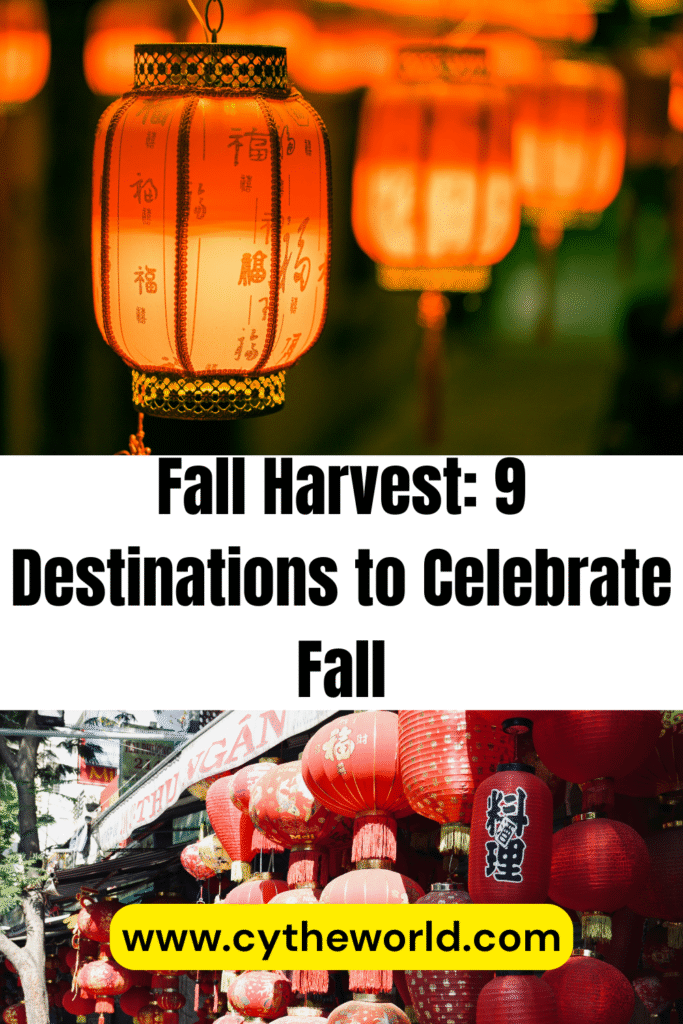
The Importance of Fall Festivals
For centuries, the fall season was the time for harvest. It was time for communities to come together and collect what they had planted during the growing season. When I was a kid growing up in a small village in Benin, this was the time we spent at the farm. People were gathering what they had grown and celebrating how well their crops had come out. It was a time of joy and excitement as families were not only happy to have enough food for their own families but also to share with others. They were also pleased because the economic benefit their produce was going to bring to them. This time, as a child, I was also excited because the harvest coincided with my birthday, which meant my mother would have enough food to host my birthday dinner and enough money to buy me a new Sunday dress and shoes for my special day. Although we did not have big celebrations like many other communities, around the globe, people mark this season with big celebrations.
Fall festivities serve as vibrant expressions of cultural heritage, celebrating themes of gratitude, remembrance, and togetherness. As the season ushers in cooler air and colorful landscapes, various communities come together to observe traditions that reflect their unique histories and values. It is a time to celebrate communities, one another, their cultures, and the loved ones they cherish. Fall presents a time when most of the Northern Hemisphere enjoys more outdoor activities before the cold winter months. The season brings beauty with fall foliage acting as a perfect background for picnics, family gatherings, and community festivities. Fall festivities have themes of creativity, gratitude, the beauty of nature, and heritage. In essence, fall festivities serve as reminders of our shared human experiences, bridging cultural gaps and fostering a sense of belonging and appreciation for life’s fleeting moments. Here are 9 popular fall festivities that bring communities together from different parts of the world.
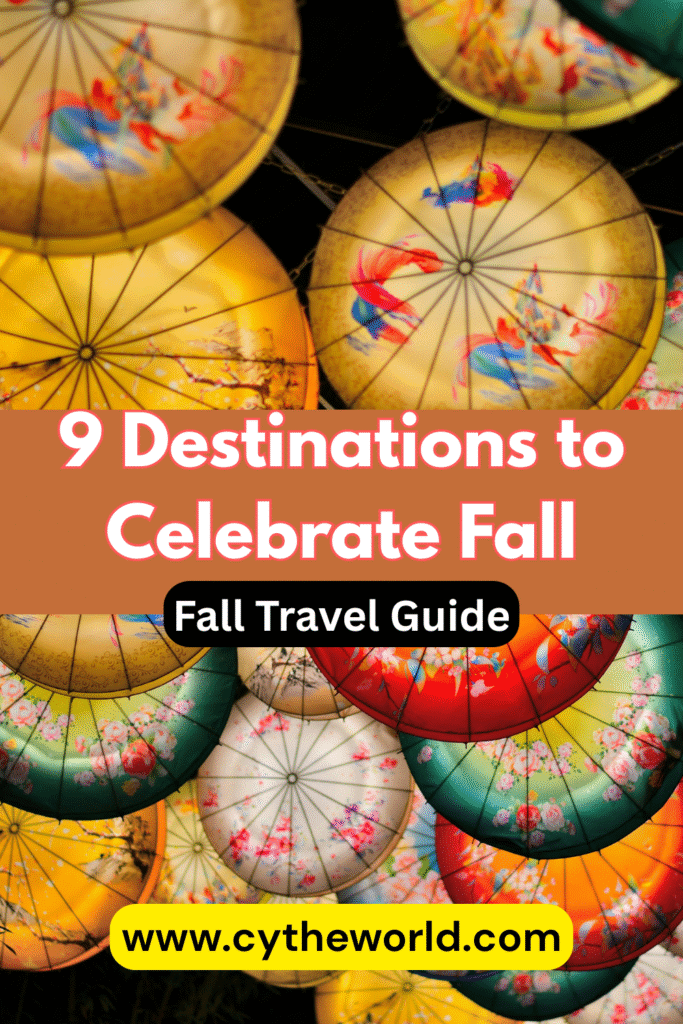
9 Fall Festivities to Enjoy
- Halloween
The first fall festival that makes fall exciting is Halloween. Celebrated on October 31st, it is a festive occasion that transcends cultures and invites everyone to embrace their creative side. The allure of Halloween lies in its unique blend of spookiness and playfulness, making it an event that is enjoyable for all ages. One of the joys of Halloween is the chance to dress up in costumes, whether as a classic ghost, a favorite character, or something entirely imaginative. The creativity of Halloween allows people to express themselves and often brings communities together in a lively spirit. From neighborhood trick-or-treating to themed parties, the social aspects are as engaging as the thrills.
Around the world, Halloween is experienced in enchanting and diverse ways. In the United States, destinations like Salem, Massachusetts, and New Orleans, Louisiana, become hubs of haunted history attractions, complete with ghost tours and themed events. Across the Atlantic, Ireland hosts numerous festive activities in celebration of Samhain, the ancient Celtic festival that inspired many Halloween customs. In Mexico, Día de los Muertos, or the Day of the Dead, is a distinct celebration that coincides with Halloween, honoring deceased loved ones with vibrant decorations and altars.
To join in the fun, consider hosting a themed gathering or attending local events such as haunted houses, pumpkin patches, or community celebrations. Participating in costume contests or carving pumpkins can also enhance the seasonal experience. When I was in college and welcomed international students, hosting a pumpkin carving event was a way to allow people to connect, build mutual understanding across cultures, and enjoy a fun activity with friends and strangers alike. Whether you relish the thrill of the eerie or seek a joyful evening with friends and family, Halloween offers a chance to indulge in fun and foster connections. It is a time to celebrate creativity, tradition, and community spirit, making it a holiday well worth enjoying during the fall.
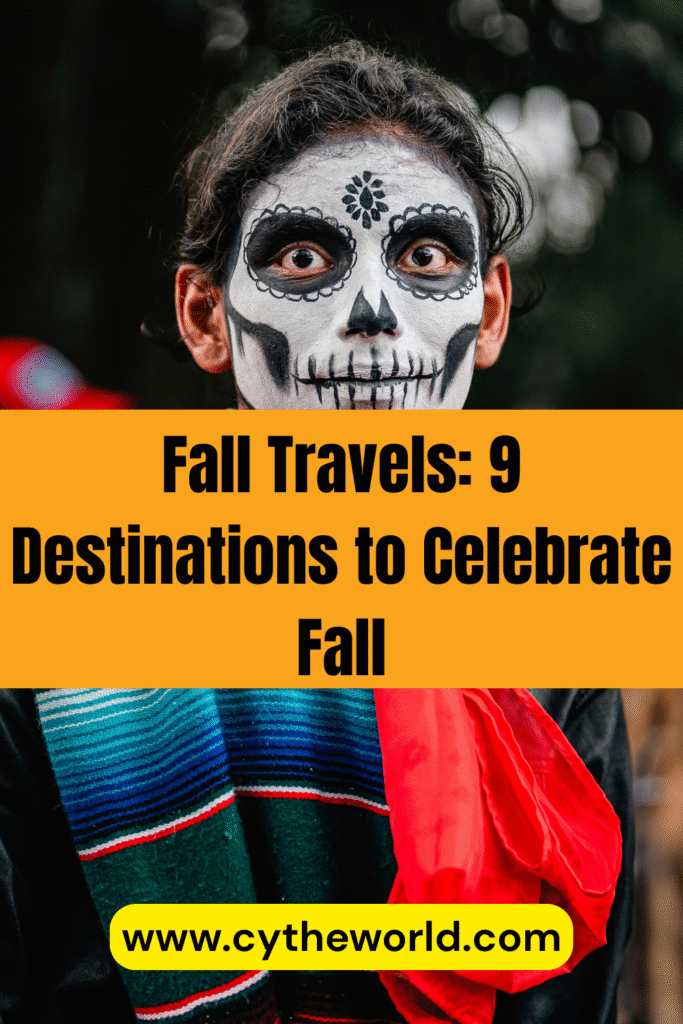
- Thanksgiving
The second fall festival is Thanksgiving, a cherished holiday in the United States. A Voronoi poll showed 23% of Americans rate this holiday as their favorite holiday of the year, coming second to Christmas. Celebrated on the fourth Thursday of November, the holiday represents gratitude, family, and the importance of community. Historically, it commemorates the harvest feast shared by the Pilgrims and the Wampanoag Native Americans in 1621, symbolizing cooperation and thanksgiving for the bountiful harvest.
Celebrating Thanksgiving often revolves around a large family gathering over a meal. Turkey is the centerpiece, accompanied by various side dishes, including stuffing, mashed potatoes, cranberry sauce, and pumpkin pie. Many families also take the opportunity to express what they are thankful for, whether around the dinner table or through family traditions, such as writing down blessings and sharing them aloud. Many homes incorporate their own tradition into the celebrations. For those who are away from family members, they can participate in friendsgiving, which celebrates togetherness and friendships. In the U.S., the night of Thanksgiving is also viewed as the beginning of the Christmas season. After dinner, many family brings out their Christmas trees and decorations to end the day on a more festive note.
In addition to the home celebrations, various events mark the occasion. Parades are a significant aspect of Thanksgiving, with the Macy’s Thanksgiving Day Parade in New York City being the most famous. It features extravagant floats, marching bands, and performances, drawing millions of viewers both in person and on television. Thanksgiving is not just limited to the United States; Canada observes its own Thanksgiving on the second Monday in October, marking a similar time of harvest and gratitude. In other parts of the world, such as Liberia and the Caribbean, Thanksgiving is celebrated in unique ways, often tied to the values of family and togetherness. In sum, Thanksgiving is a time for reflection and appreciation. Whether with friends or family, in a bustling city or a quiet home, it serves as a reminder of our connections and the abundant blessings in our lives.
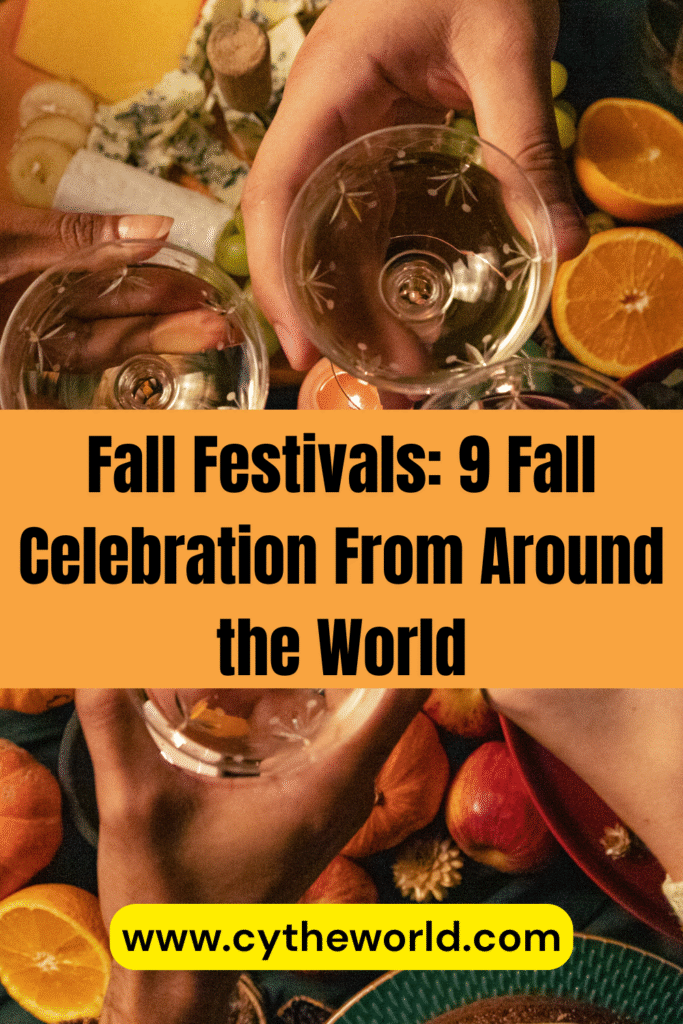
- Diwali
One of my favorite fall celebrations is Diwali, also known as the Festival of Lights. I learned about the celebration during my first year of college. I attended a campus event hosted by an Indian student group, which introduced me to this fall festival. Every year since then, I look forward to the celebration. Diwali is one of the most widely celebrated festivals in India and among various Indian communities worldwide. The vibrant festival usually falls in October or November, based on the lunar calendar, specifically on the darkest night of the month of Kartika. The festival spans five days, each with its own significance, culminating in a grand celebration. Diwali celebrates the triumph of light over darkness and good over evil, drawing on various regional legends.
In Hindu tradition, it commemorates Lord Rama’s return to Ayodhya after defeating the demon king Ravana. In other cultures, it celebrates the arrival of the Goddess Lakshmi, symbolizing prosperity and wealth. The lighting of diyas (oil lamps) and decorating homes with colorful rangoli are central to the festivities, fostering a warm and inviting atmosphere. To truly experience Diwali, cities such as Varanasi, Jaipur, and Delhi serve as ideal destinations. In Varanasi, the ghats along the Ganges are adorned with countless floating lights, creating a breathtaking visual spectacle. Jaipur showcases stunning firework displays and vibrant processions, while Delhi immerses visitors in its decadent culinary delights and bustling markets filled with sweets and traditional decorations.
Celebrating Diwali also involves family gatherings, exchanging gifts, and enjoying festive meals that include an array of delicious sweets and savory dishes. It fosters a spirit of unity, gratitude, and joy, allowing families and friends to reconnect and celebrate their cultural heritage. Around the world, Indian communities continue their traditions by bringing Diwali to their different communities, which helps others join in this celebration. During the celebration, when I was in college, Indian students used these festivities to introduce Indian culture to the broader community. There was a henna table where people could get tattooed for free, and it was a great way to learn about other cultures and experience a popular celebration while away from mainland India. Whether you participate in local festivities or experience the grandeur of Diwali in India, it is a time of immense joy and a reminder of the light that resides within us all.
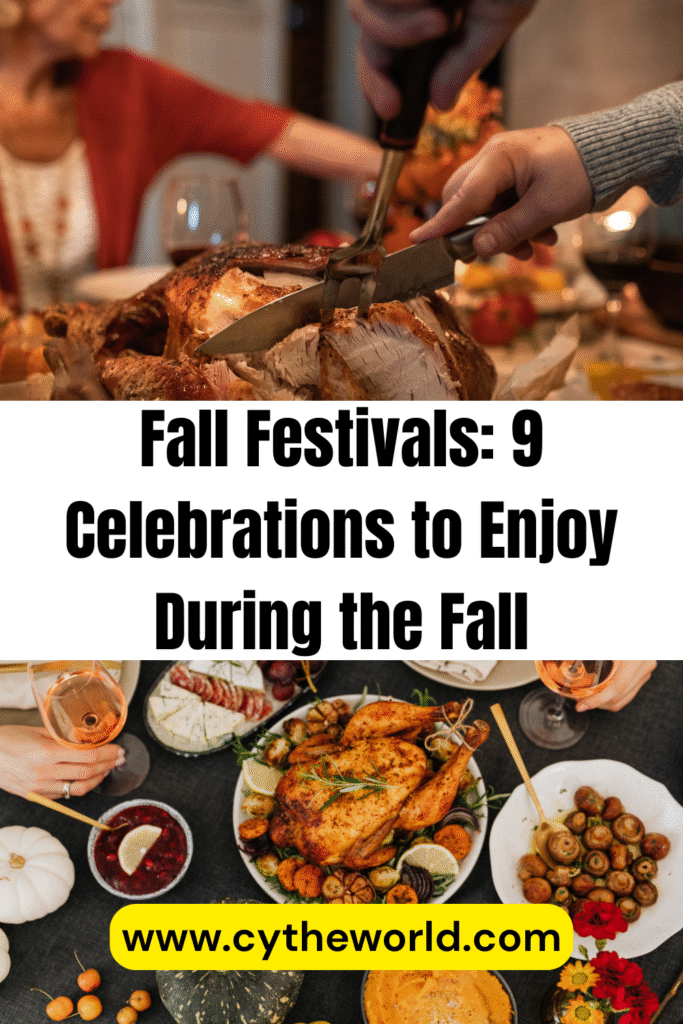
- Dias de los Muertos
Another festive fall celebration is Día de los Muertos, also known as the Day of the Dead. I was introduced to it during my college years as well, through a Bolivian roommate of mine. While people compare it to Halloween, and they do share a similar origin, Dia de los Muertos is a vibrant and deeply rooted Mexican tradition that honors deceased loved ones. Celebrated primarily on November 1st and 2nd, this holiday blends indigenous practices with Spanish Catholic influences, creating a unique cultural expression. Although around the world, November 1st is known as All Saints Day, and is often a somber day, Día de los Muertos honors the dead with a grand celebration.
Its origins can be traced back to the ancient Aztec civilization, which held a reverence for death as a natural part of life. The Aztecs believed that the spirits of the dead returned to the earthly realm during these days to visit their families and loved ones. Therefore, for two nights, the living and the dead are reunited, which is why this calls for a celebration. The celebration of Día de los Muertos is marked by a range of customs and rituals. Families create altars, known as “ofrendas,” adorned with photographs, mementos, and favorite foods of the deceased. Marigolds, particularly the vibrant Cempasúchil flowers, are commonly used to guide the spirits back home with their bright colors and scent. Sugar skulls, decorative papel picado (perforated paper), and candles are also integral to the festivities, each symbolizing different aspects of life and death.
Día de los Muertos is celebrated across Mexico and in many Latin American countries, gaining popularity in the United States as well, especially in communities with strong Mexican roots. Major cities like Oaxaca, Mexico City, and Los Angeles host grand parades and festivals, drawing thousands of participants who dress in traditional attire, paint their faces with designs inspired by sugar skulls, and participate in lively music and dancing. This celebration not only honors those who have passed but also emphasizes the importance of life, love, and the enduring connection between the living and the deceased.
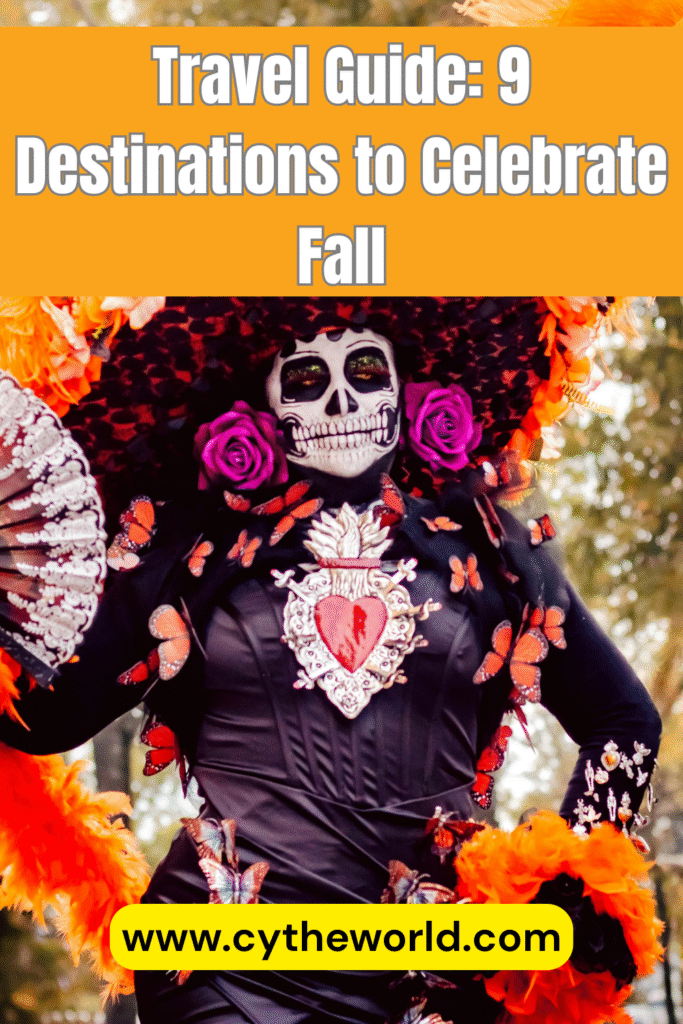
- Oktoberfest
This fall festival takes us to Germany. Oktoberfest, the world’s largest folk festival, is a must-experience celebration of Bavarian culture held annually in Munich, Germany. Spanning 16 to 18 days from late September to the first weekend in October, this event attracts millions of visitors eager to enjoy its vibrant atmosphere. The festival’s roots trace back to 1810 when Crown Prince Ludwig married Princess Therese of Bavaria. The citizens of Munich were invited to join in the festivities, which included horse races, food, and merriment. Over the years, the festival has evolved into a showcase of Bavarian traditions, beer, and delicious cuisine.
Visitors to Oktoberfest are greeted by enormous beer tents, each hosted by local breweries, such as Hofbräu, Paulaner, and Spaten. Here, guests can indulge in traditional German dishes, such as pretzels, sausages, and roasted chicken, all while enjoying the lively sounds of folk music. The experience is heightened by the warm camaraderie found in the bustling atmosphere, where people from all around the world come together to celebrate. Besides sampling the culinary delights, there are numerous ways to enjoy the festival. Attendees can participate in carnival rides, games, and the renowned Dachshund race, adding an element of fun for all ages.
Moreover, spectators will enjoy traditional dances, parades, and cultural performances, providing insight into Bavarian customs. Oktoberfest is more than just a festival; it’s a cultural experience that celebrates community, heritage, and the joy of togetherness. If you cannot attend the festival in Munich, do not worry; major cities have incorporated this tradition, bringing Bavarian culture to the world. When I lived in Washington, D.C., bars hosted Oktoberfest-themed games, festivals, and plenty of beer. Whether sharing a stein of beer with friends or experiencing authentic Bavarian hospitality, this festival is an unforgettable way to embrace the spirit of fall.
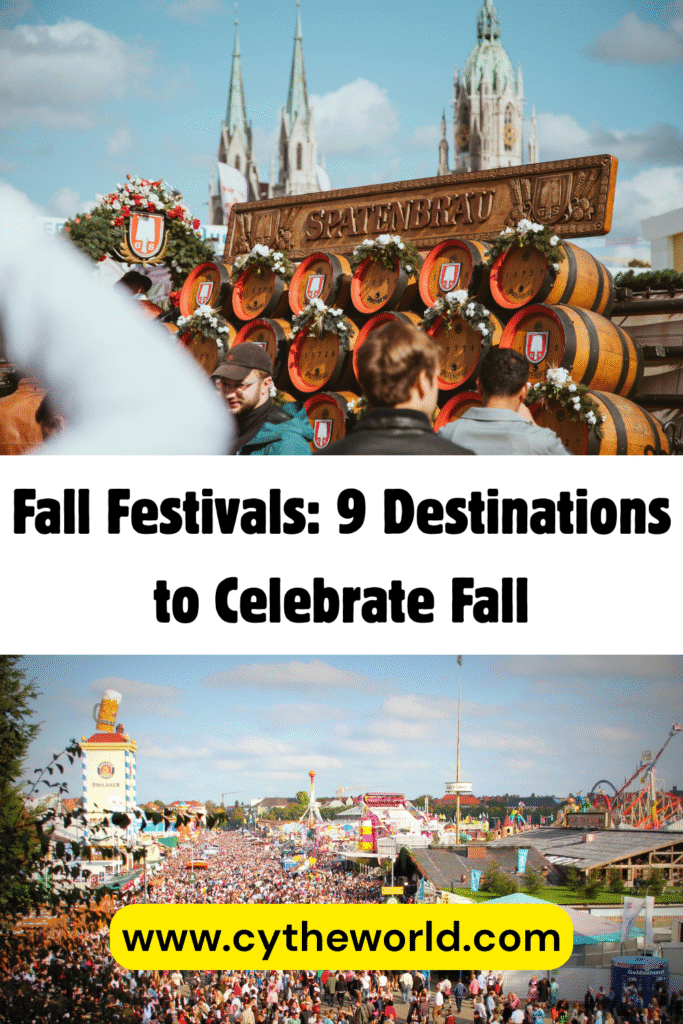
- Lantern Festivals in Thailand
Thailand has gained popularity among travel enthusiasts. It is affordable, and people are friendly; hence, it is often called the Land of Smiles. Additionally, it offers a rich cultural experience. One of the cultural experiences to enjoy if you visit in the fall is the Lantern Festival, known as Yi Peng. The Lanter Festival is a vibrant celebration in Thailand that honors the full moon of the 2nd month of the Thai Lanna Calendar. The annual event, particularly prominent in the northern city of Chiang Mai, has deep historical roots intertwined with Buddhist traditions. The festival symbolizes the letting go of misfortunes and the welcoming of good fortune and prosperity for the year ahead.
Historically, Yi Peng can be traced back to the Lanna Kingdom, where lanterns were used not only for decoration but also as a means of worship. People would release lanterns into the sky as a gesture of gratitude while seeking blessings from the Buddha. Over time, this tradition evolved, and now, it encompasses various customs and celebrations, uniting people in a shared experience of hope and renewal. Several activities mark celebrations during Yi Peng. The most iconic is the release of thousands of sky lanterns (khom loi) into the night sky, creating a breathtaking spectacle. These lanterns, usually made of rice paper, are lit and released with heartfelt wishes, symbolizing the release of worries and troubles.
The festival also includes traditional Lanna cultural performances, such as the Fawn Leb and the Fon Thien. It also hosts food fairs and decorates homes and public spaces with elaborate lanterns. In addition to the sky lanterns, many participants float lanterns on rivers, adding to the serene beauty of the occasion. Local communities often gather for candle-lit ceremonies and prayers at temples, reinforcing the festival’s spiritual significance. Through these joyous celebrations, the Lantern Festival in Thailand fosters a sense of community, hope, and cultural identity, making it a cherished event for locals and tourists alike.
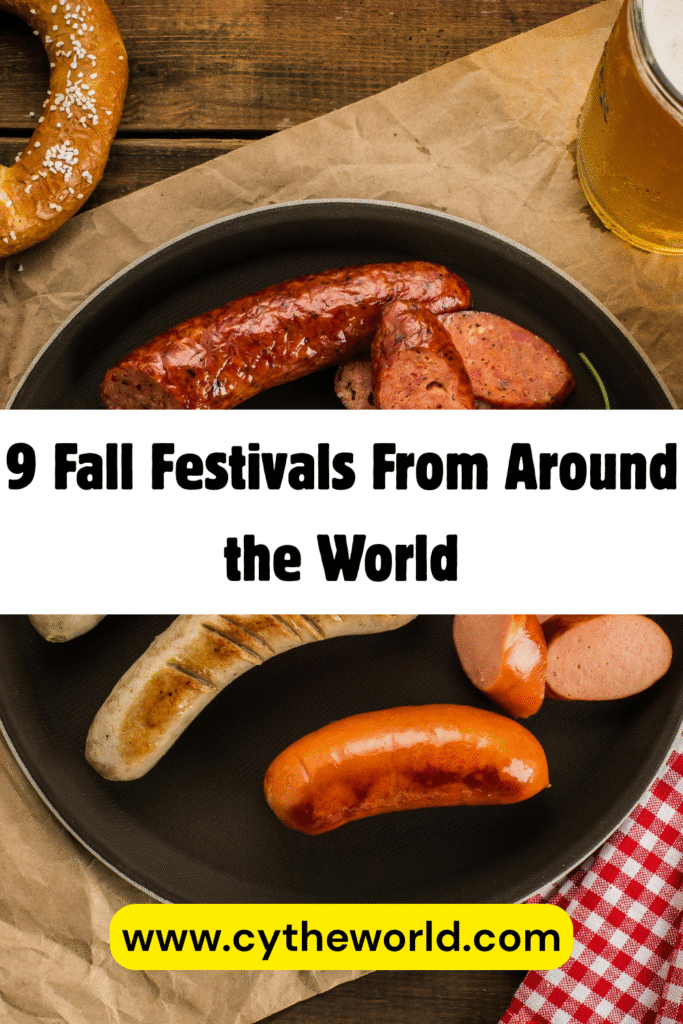
- Nuit Blanche
Nuit Blanche is a different kind of fall festival. Although most cities hold it during the fall season, some cities have it on a different date in the year. Nuit Blanche, meaning “White Night” in French, is an exhilarating all-night arts festival celebrated in various cities around the world, with its most notable origins in Paris. The unique event transforms urban landscapes into open-air galleries and dynamic art experiences, allowing the public to immerse themselves in diverse forms of art and culture throughout the night. The history of Nuit Blanche can be traced back to 2002, when it was first organized in Paris as part of the city’s initiative to promote contemporary art. The first Nuit Blanche welcomed 500,000 spectators to the festival. The concept quickly gained popularity, inspiring other cities to adopt the model.
Over the years, Nuit Blanche has expanded to cities such as Toronto, Brussels, and Sydney, each putting its own spin on the festivities while fostering local creativity and engagement. During Nuit Blanche, museums, galleries, and cultural venues extend their hours, offering free access to artistic installations, performances, and exhibitions. Artists from various disciplines, including visual arts, music, dance, and theater, showcase their work in public spaces, encouraging interaction and exploration among attendees. The festival not only highlights local talent but also attracts international artists, creating a vibrant melting pot of cultural expression.
This celebration of art under the stars fosters a sense of community and camaraderie, inviting people from all walks of life to explore their city in new and exciting ways. It is the perfect festival for night owls who enjoy the arts and mingling with people from diverse cultures. Nuit Blanche stands as a testament to the power of art to illuminate the night and unite people in a shared experience of creativity and inspiration.
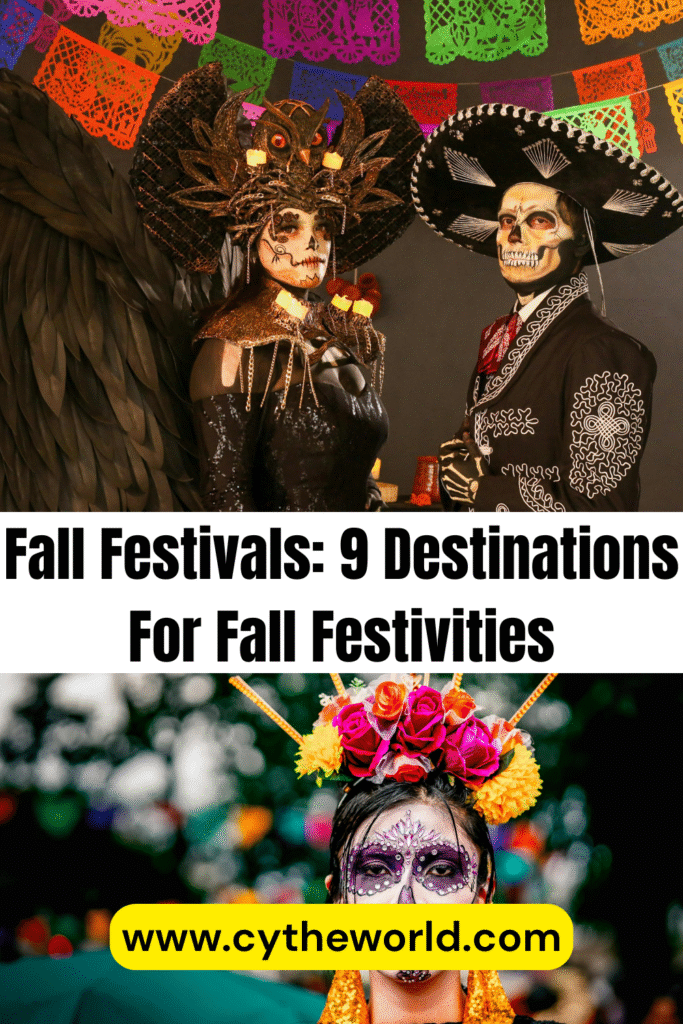
- Guy Fawkes Night
While Paris has Nuit Blanche, the United Kingdom has Guy Fawkes Night. Famously known as Bonfire Night, Guy Fawkes Night is observed annually on November 5th in the United Kingdom. The event commemorates the foiling of the Gunpowder Plot of 1605, a conspiracy aimed at assassinating King James I and restoring a Catholic monarchy. The plot was led by Guy Fawkes and a group of co-conspirators who intended to blow up the Houses of Parliament by placing explosives in the cellar. However, their plan was thwarted when authorities received an anonymous tip-off, leading to Fawkes’ arrest on the night of November 4th. What started as a coup d’état evolved into the celebration of Guy Fawkes Night and has become a nationwide event characterized by bonfires and fireworks.
Traditionally, effigies of Guy Fawkes, referred to as “Guy,” are created and burned on bonfires, symbolizing the victory of Parliament over the plotters. The origins of the celebration can be traced back to the day following the plot’s discovery, when communities lit bonfires to celebrate the king’s safety. Although primarily celebrated in England, Guy Fawkes Night is also recognized in other parts of the UK, including Wales and some areas of Scotland. The festivities include fireworks displays, family gatherings, and community events, all of which contribute to a vibrant atmosphere.
In recent years, many people have increasingly viewed the event as an occasion for social renewal, gathering with friends and family to enjoy the spectacle of the skies lit up with colorful fireworks. Despite its historical roots, Guy Fawkes Night has evolved into a communal celebration of unity, reflecting the importance of political representation and civil rights.
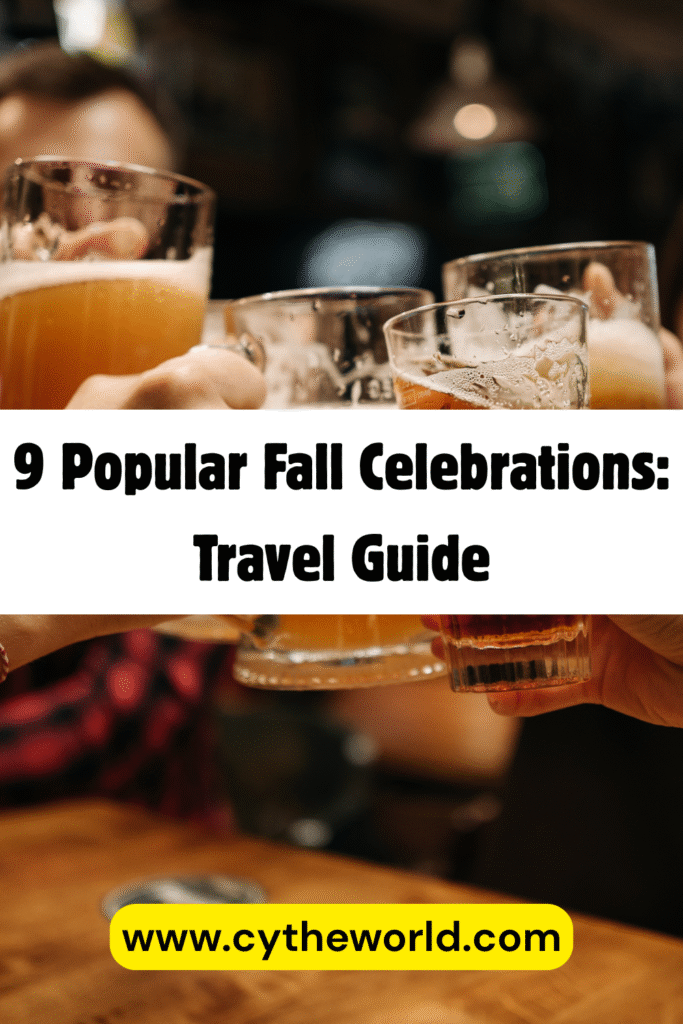
- Mid-Autumn Festival in China
The last fall celebration from around the world to be aware of is the Mid-Autumn Festival. If you are traveling in China, this is a notable event to experience. Also known as the Moon Festival, it is one of the most significant traditional celebrations in China, deeply rooted in its rich history and profound cultural significance. Celebrated on the 15th day of the 8th lunar month, it coincides with the harvest season, marking a moment of reunion and gratitude. The festival’s origins can be traced back over 3,000 years to the Zhou Dynasty, where moon worship was an integral part of agricultural life. Historically, the festival has evolved through various dynasties, including the Tang and Song. During these dynasties, the festival gained prominence with the establishment of customs such as family gatherings and moon-gazing, as people admired the roundest moon of the year.
Tales of legend, such as that of Chang’e, the Moon Goddess, have also enriched the festival’s meaning, symbolizing love and reunion. Today, the Mid-Autumn Festival is celebrated with a plethora of traditions that emphasize family and community. Families come together to enjoy mooncakes, a delicacy that symbolizes unity and completeness. These round pastries are filled with a variety of ingredients, ranging from sweet red bean paste to lotus seed and salted egg yolk, catering to diverse tastes and preferences.
Festivities often include lantern displays, where intricately designed lanterns are hung or carried, illuminating the night sky. Children enjoy playing with these lanterns, creating a vibrant, festive atmosphere. Additionally, cultural activities such as dragon dances and poetry recitations enhance the celebratory spirit, bridging generations through shared heritage. In essence, the Mid-Autumn Festival embodies appreciation for nature and togetherness, making it a cherished occasion in Chinese culture.
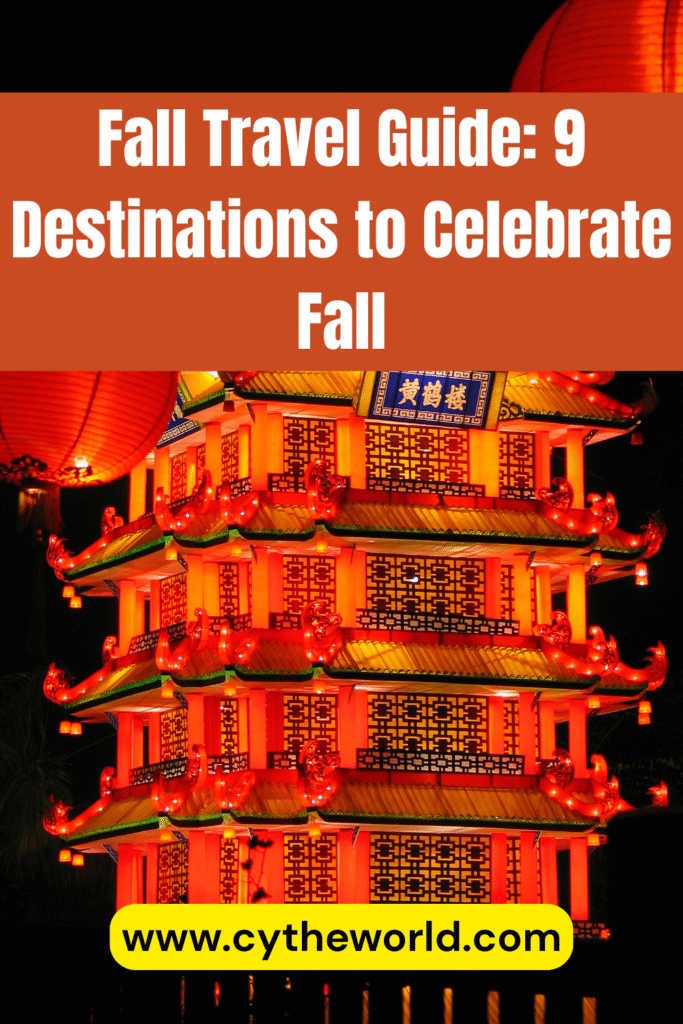
Conclusion
In conclusion, fall is a season rich with opportunities to celebrate cultural heritage and foster connections within communities. The nine festivities highlighted in this guide showcase the diversity of traditions around the world, each embodying unique expressions of gratitude, remembrance, and creativity. Whether it’s through the playful spirit of Halloween, the heartfelt gatherings of Thanksgiving, or the vibrant lights of Diwali, these celebrations encourage us to come together, embrace our roots, and appreciate the beauty of each moment. As the leaves change and the air turns crisp, consider taking part in these autumnal activities, whether at home or abroad. Embrace the spirit of fall by engaging with local traditions, sharing meaningful moments with loved ones, and creating lasting memories.
As always, thank you for reading. Please like, subscribe, and sign up for our mailing list to start receiving exclusive travel tips and deals!
Until next time, Happy Fall!
xoxo,
Cy